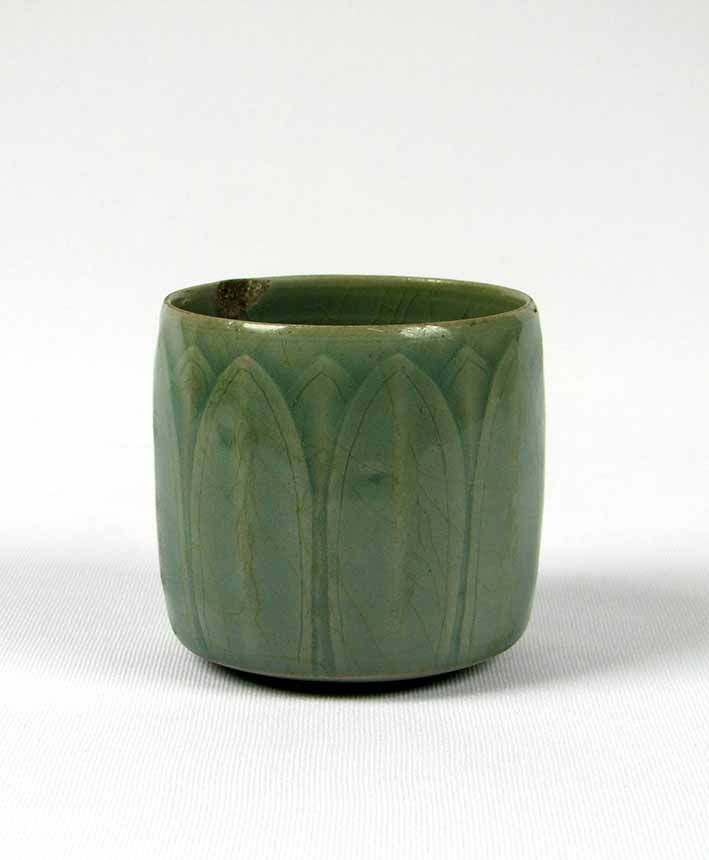It is rare to find such a survey of Southeast and East Asian ceramics in Europe. The exhibition is based on the Slunecko Collection in Austria and over 120 objects are on view. The display is arranged by country and then chronologically and includes pieces from Vietnam, Thailand, Cambodia, Korea, and Japan and allows the visitor to explore the specific characteristics of each culture.
Slunecko Collection of Southeast and East Asian Ceramics
Heinz Slunecko focuses on countries that, despite being strongly influenced by China, are constantly seeking their own language of form. In ceramics, cultural and technical developments are readily seen in a way that scarcely any other medium can rival, and it this the change and development of these ceramics that is of special interest to the collector, as can be seen in this exhibition. ‘The personal affinity to the material plays a major role in every collection – like to sense the clay, the fire, the individuality, explains the Slunecko, whose collection has been enriching MAK exhibitions for more than 10 years.
Vietnamese Southeast Asian Ceramics
Ever since the 3rd century BC, Vietnam had been confronted with China’s unification under Emperor Qin Shihuangdi and his expansionist ambitions and thus exposed to its political and cultural influence, particularly from Southern China. Grave goods suggest that Chinese techniques, religions, and cults were adopted, but independent forms of expression were also pursued.
The typical Vietnamese cup with handle, on show in the exhibition, derives from this early period. From the 7th century onwards, trade relations intensified between the countries of East and Southeast Asia, as well as Central and West Asia, which promoted the production of everyday ceramic goods as a major trade factor. Diversity of forms and richly varied decorations are characteristics of the ceramics of this period.
Japanese Elite Valued Vietnamese Ceramics
The Japanese elite valued Vietnamese ceramics very highly and in the tea ceremony they liked to use bowls from the Ly dynasty (1009-1225) from North Vietnam. These ceramics had bright glazes and were decorated with symbols of the lotus that are profoundly imbued with the spirit of Buddhism. In art and culture, Vietnamese rulers looked towards China and this can be seen in the style and technique of the ceramics.
Thai Ceramics
However, Southeast Asian ceramics from Thailand, from the second half of the 13th century onwards, culture and taste were based on the high culture of the Khmer Empire and its ancient capital of Angkor. The centre of ceramic production was relocated to the region around Sukhotai and Si Satchanalai. Here they used a greyish stoneware with floral iron-oxide painting, there were also luxury commodities with green celadon glaze. These ceramic artefacts of the Siamese peninsula are distinctive for their extraordinarily imaginative wealth of forms.
Korean Ceramics
Korea, in contrast to Japan, had an autonomous ceramic industry and their forms and glazes were highly sought after all over Asia. Until the 13th century, the most notable developments were in stoneware with celadon glaze. Forms, seemingly borrowed from metalwork, are decorated in a great variety of techniques and have an olive-green glaze. Most particularly – and known only in Korea – is the intarsia technique (sanggam), which involves incising the decoration into the biscuit ceramic and then filling it with bright, or dark, clay. The so-called Buncheong ware exercised great influence on the development of Japanese ceramics and it was a dominate technique into the 16th century.
Japanese Ceramics in Sulencko Collection
In the Japanese display, apart from a small collection of historical ceramics used in the tea ceremony, the pieces on show in the MAK exhibition are mainly focused on ceramics produced by families – the collector has been cultivating friendly relations with many of them for years. Especially worthy of mention are the ceramics from the Yamaguchi Province in West Honshu, where you can still detect Korean influence in the work. Another completely different Japanese style is Bizen ware. Thanks to its deep-red earth, idiosyncratic designs, and irregular surface composition, the ceramics gained fame far beyond the borders of Japan and since the mid-20th century has been enjoying an upsurge in recognition. The ceramic artist and craftsman Yu Fujiwara (1932-2001), distinguished as a Living National Treasure, also has pieces in the exhibition. Yu’s craft is founded in a long family tradition and he has achieved a great awareness and appreciation for the further development of Bizen ware.
As a counter-balance to the popularity and scale of East Asian ceramics, especially Chinese ceramics, the MAK exhibition gives the viewer a chance to contemplate ceramics from less well-known regions, such as Cambodia, Vietnam and Thailand and allows the visitor to explore a new perspective onto the plain and simple objects – made out of earth and fire.
Until 10 June, MAK Design Lab, MAK, Vienna, mak.at





